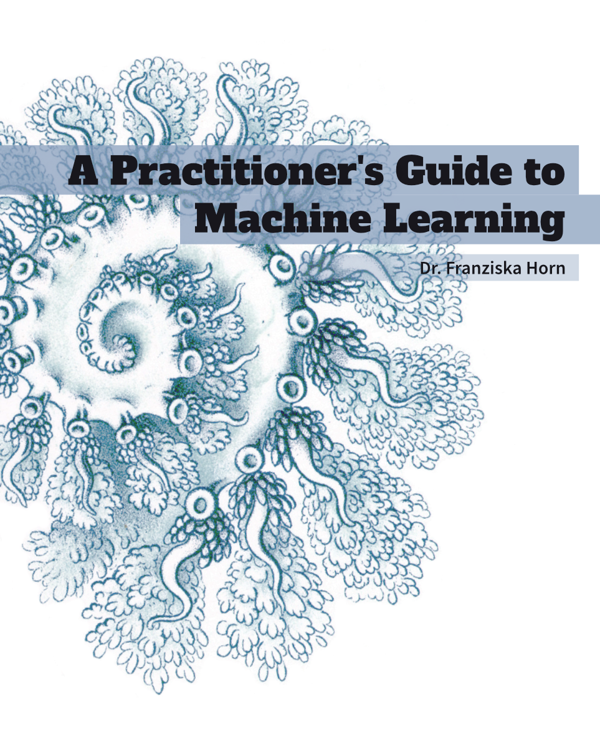A Practitioner’s Guide to Machine Learning
Preface

Why read this book?
There are a lot of machine learning (ML) resources out there. Many of them either targeted at students or researchers and rather heavy on the mathematical theory, or others in the form of tutorials, focusing on the concrete implementation and application of some ML algorithm to a specific problem. This book tries to find a middle ground between both the theoretical background, which I have studied in depth while completing my PhD in machine learning at the TU Berlin, Germany, and the practical applications of these algorithms to solve different problems, as I have been doing in the last few years as an independent data science consultant for various firms. This book originated from my experience holding dozens of machine learning seminars and workshops in front of audiences with varying levels of technical and mathematical background.
Questions this book answers:
- Which problems can machine learning (ML) solve?
- How does ML solve these problems, i.e., how do the algorithms work (in theory)?
- How do you actually get this to work in practice and avoid common pitfalls?
This book does not explain the latest fancy neural network model that achieves state-of-the-art performance on some specific task. Instead it provides a general intuition for the ideas behind different machine learning algorithms to establish a solid framework that helps you better understand and integrate into a bigger picture what you later read about these specific approaches.
This book exist in two versions:
- The full version, targeted at (about to be) data scientists.
- The condensed version, targeted at a more general audience (also available in German).
The condensed version is written for all audiences, i.e., readers generally interested in ML, who want to understand what is behind the hype and where ML can – or should not – be used. The full version is mainly written for ML practitioners and assumes the reader is familiar with elementary concepts of linear algebra (see also this overview on the mathematical notation used in the book).
If you prefer to work through the book’s content in a more structured way as part of a group, you can also enroll in one of my online courses. There, you’ll also have the opportunity to discuss questions.
While the book focuses on the general principles behind the different models, there are also references included to specific Python libraries (mostly scikit-learn) where the respective algorithms are implemented and tips for how to use them. To get an even deeper understanding of how to apply the different algorithms, I recommend that you try to solve some exercises covering different ML use cases.
This is still a draft version! Please write me an email or fill out the feedback survey, if you have any suggestions for how this book could be improved!
Tip: You can also download the book as a PDF by clicking on the PDF icon next to the title in the upper left corner.
Enjoy! 😊
Acknowledgments
I would like to thank: Antje Relitz for her feedback & contributions to the original workshop materials, Robin Horn for his feedback & help with the German translation of the book, and Karin Zink for her help with some of the graphics (incl. the book cover1).
How to cite
@book{horn2021mlpractitioner,
author = {Horn, Franziska},
title = {A Practitioner's Guide to Machine Learning},
year = {2021},
url = {https://franziskahorn.de/mlbook/},
}Book cover, featuring a drawing of part of a Siphonophorae (a kind of jellyfish) by Ernst Haeckel from his book “Kunstformen der Natur” (1900, Tafel 37; source: www.BioLib.de).↩︎